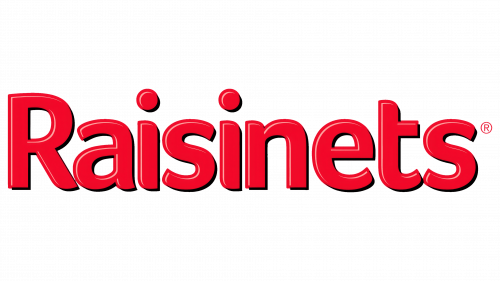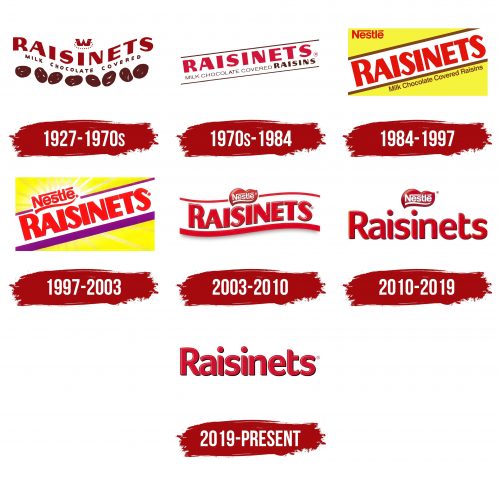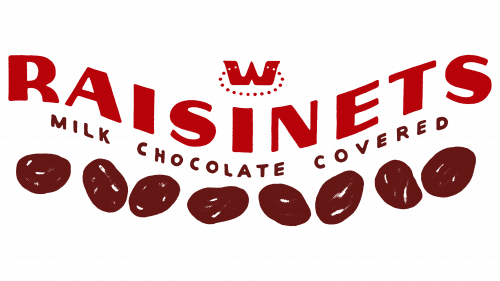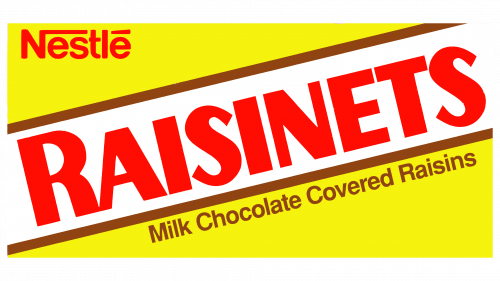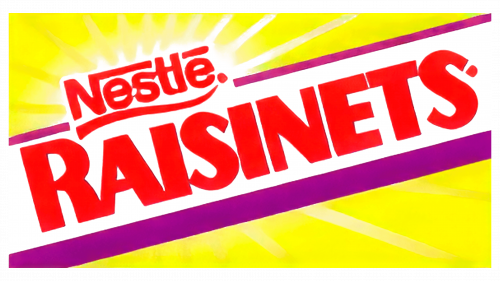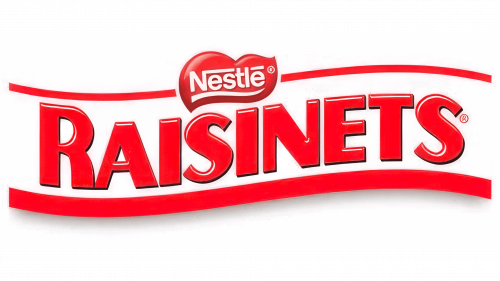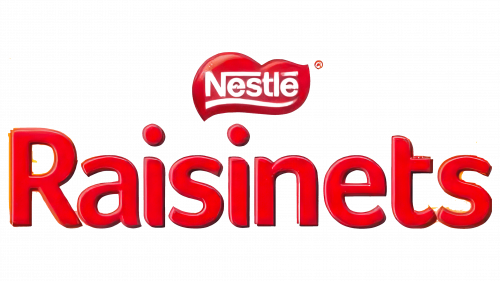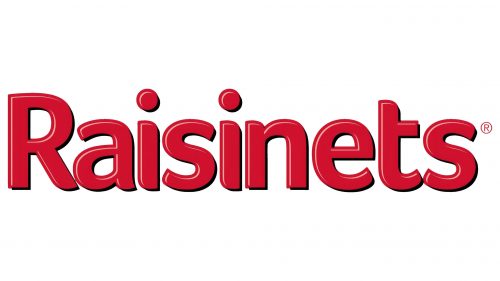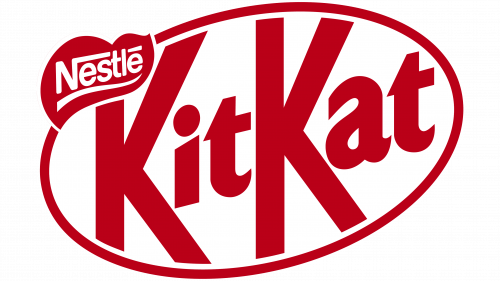The Raisinets logo is concise and conservative, conveying the company’s entire philosophy through the brand name alone. Designers highlighted the company’s reliability and customer focus with the bright nine letters. The vibrant, fire-red letters on a white background look striking, conveying confidence in the future and the company’s dynamic development.
Most importantly, they remind us that Raisinets’ delicious products are essential to watching a new movie in American theaters. The logo emphasizes the brand’s stable and authoritative position in the global market, belonging to Nestlé.
Raisinets: Brand overview
The inventive product known as Raisinets was first developed in 1927 by the Philadelphia, Pennsylvania-based Blumenthal Chocolate Company. Raisinets were among the first candy to introduce the pairing of chocolate and raisins, a novel concept at the time.
When it was established in 1900, the Blumenthal Chocolate Company was well known for its high-quality chocolate goods. The choice to coat raisins in chocolate was risky and soon paid off. The distinctive fusion of chocolate’s sweetness and raisins’ inherent acidity gave rise to the product’s popularity.
Despite the Great Depression, the candy remained popular in the 1930s. Thanks to the combination of chocolate and raisins, they had a relatively low price and high nutritional value, making them a popular choice for consumers looking for reasonably priced treats.
The confection experienced significant growth during the 1940s. Because the sweets were a part of the supplies given to American soldiers in World War II, their popularity increased nationwide. The market for the candy grew as a result of the wartime demand from returning troops.
The treat gained popularity as a movie theater snack in the 1950s. It was a great option for moviegoers because of its easy packing and slightly sticky consistency. This connection to theaters heavily influenced the brand’s identity for a long time.
The ownership of the product changed during the 1960s. Ward Foods purchased the Blumenthal Chocolate Company in 1967. Through this transaction, the marketing and distribution channels could now grow.
Candy enthusiasts continued to choose the product throughout the 1970s. The company started to use television advertising more frequently, which helped to raise its profile even further.
Another big ownership shift occurred in the 1980s. Nestle purchased the brand from Ward Foods in 1984. The administration of Nestlé, a multinational corporation with vast resources, gave the candy a fresh impetus for growth.
Nestlé started highlighting its candy’s fruit and natural components in the 1990s in response to the increased interest in healthy eating. This helped present the product as a more healthful option than other candy.
The 2000s were a time of innovation for the brand. To broaden its product offering and draw in new customers, Nestlé unveiled new product variations, such as Cranberry Raisinsinets and dark chocolate variants.
The brand kept adjusting to shifting consumer trends throughout the 2010s. In response to consumer demand for healthier snack options, the company utilized more natural ingredients and enhanced the product’s nutritional profile.
The 93rd anniversary of the candy was honored in 2020, and the brand’s rich history and customs were emphasized in marketing activities. Nestlé celebrated the event by releasing a limited edition of vintage-style packaging that reflected different periods in the product’s past.
For the brand, 2021 represented a major advancement toward sustainability. Nestlé declared that the chocolate in the product would subsequently be made sustainably with cocoa sourced from sustainable sources. This program was a component of the business’s larger plan to become more environmentally conscious.
In 2022, the confection introduced Raisinets Trio, a new variety, expanding its product portfolio. This product catered to the trend of flavor variety and growing interest in superfoods by combining three varieties of dried fruits (blueberries, cranberries, and raisins) wrapped in chocolate.
For the brand, 2023 was a year of innovative packaging. The company unveiled brand-new, completely recyclable packaging constructed of sustainable materials. This action aimed to draw in eco-aware customers and lessen the amount of plastic waste produced.
In 2024, the brand introduced “Raisinets Through the Decades,” an interactive internet campaign that lets users explore the brand’s past and share recollections of the product. This campaign sought to draw in a younger audience through digital activities and deepen the brand’s emotional connection.
Candy enthusiasts continue to choose this brand because it combines classic flavor with innovation and adjusts to shifting consumer tastes.
Meaning and History
What is Raisinets?
It is a brand of chocolate-covered raisins produced by Ferrero Group, a global confectionery company known for its products. The brand offers a popular snack that combines juicy raisins with smooth milk or dark chocolate. It has long been known as a tasty and convenient treat, often offered at movie theaters and as a snack on the go. The company emphasizes quality in its confectionery products, making them a favorite choice for consumers. The brand’s products are widely available in supermarkets, stores, and online stores.
1927 – 1970s
The brand originally introduced itself as a producer of unique chocolate-covered raisins, although it was not their creator. The company achieved a leading market position due to its products’ high quality and excellent taste. Those who tried this unconventional chocolate with its original content for the first time were forever captivated by its charm and aftertaste.
A crucial aspect of the brand was the proper visual representation of its key aspects. The identity needed to reflect all significant elements and features. Therefore, special attention was given to the color scheme. The red letters drew attention, while the brown, close to chocolate, evoked a desire to try the product. White was used in two ways: as a background for the text and as a highlight element on the chocolate-covered raisins.
The logo had sufficient information: more than three keys and several additional elements. The name of the candies, placed at the center of the logo, guided the buyer on which sweet product to choose. The crown, highlighted with dots in a circle, symbolized the company’s reliability, grandeur, and competitiveness. The inscription “MILK CHOCOLATE COVERED” indicated the taste and superiority of the product, emphasizing its confectionery perfection.
Eight raisins on the logo attracted attention and created a desire to quickly try this delicious treat from a well-known company.
1970s – 1984
In 1970, the brand’s identity changed. The logo no longer featured the prominent raisins and the crown element. By this time, the product no longer needed popularization, as the raisins had become beloved in various cities, and attention needed to be focused on other aspects.
The brand name became clearer and brighter. The inscription detailing the raisins’ composition was refined, and its style was acquired. Red and brown remained the priority colors, with white continuing to serve as the background.
All words were written in a single line that rose from the left corner to the right, clearly expressing geometry. Two horizontal lines appeared—one above the words, the other below. These lines formed an elegant frame, drawing attention to its content.
The overall perception of the logo became more harmonious and balanced while maintaining the dynamism of the identity.
1984 – 1997
One of the most striking logos in the company’s history appeared in 1984. Yellow was introduced into the identity, attracting attention like the sun. It became the background for the main part of the logo, while white was used for the frame. The letters were red, representing the company’s and brand’s names. Each word had its style, font, and scale.
The inscription “MILK CHOCOLATE COVERED” was placed below the lower line, whereas previously, it was on the same plane as the brand name.
The word “Nestlé” was positioned horizontally in the corner, using a classic font without letter separation. The first and last letters were distinguished by their originality with unique embellishments.
The brand name, highlighted in red, was placed centrally and diagonally. All the letters were straight, elongated, and quite massive.
1997 – 2003
Bright colors are often used in confectionery branding, and logo design involves creativity and originality. An example is the logo created in 1997, where the dynamic use of colors is the main element for attracting customers’ attention.
This logo is a unique experiment with contrast and color solutions. The primary tone is a rich red, which is used for the text elements. Yellow is applied in optimal proportion to white and red.
The sun symbolizes the brightness of the flavor and the company’s prominence, with its rays highlighting the Nestlé name. Purple acts as a marker, helping to set accents properly.
Interestingly, the purple lines in the new logo vary in thickness. This variation ensures that the creator of these exquisite treats stands out when looking at the product.
2003 – 2010
This logo can rightfully be called the most romantic. Its appearance evokes a range of positive emotions and is associated with love. The primary color is red, which stands out conceptually against the white background used for displaying the name and the frame, which consists of two horizontal lines that are not connected. The parent company’s name is written in white letters and enclosed in a romantic shape resembling a heart.
The trend towards simplicity and minimalism is evident in the absence of additional drawings and images. The only element enhancing the presentation features of the logo is the slightly rounded letters. The brand name seems to float on waves, creating a sense of movement.
The new logo’s visual perception is pleasant and positive, with hints of passion and love. This imagery brings to mind the delicious raisins covered in the smoothest chocolate.
2010 – 2019
In 2010, sweet lovers witnessed a major transformation of the logo. The manufacturer demonstrated a commitment to tradition while striving for perfection and innovation.
The new logo’s identity leans towards sophistication and emotional excitement. The brand name appears somewhat provocative due to the special tonality of the red color. The letters on the white background are striking and easy to read. Each element of the logo is simple and clear.
The information presented is sufficient: the stylized letters convey reliability and confidence in the future. The flowing motifs from one logo to another attest to the consistent quality of the sweet products.
2019 – today
The modern logo gravitates more toward restrained beauty. It is bright enough while maintaining the brand’s traditions, with the letters remaining a rich shade of red. This consistency signifies the company’s stability and its leadership position.
The white background conveys harmony, embodying gentleness and purity. It symbolizes the company’s careful attention to customers and responsiveness to their needs. Red and white have been used together since the company’s inception, indicating the continuity of time and generations. The taste of the raisins is familiar to people of all ages, and they hold a special fondness for their favorite treat.
The font draws special attention. The graceful initial capital letter is elegant, and the two identical “i” letters stand out with two proportionate dots shining above them. The rounded edges of all the letters add a touch of softness and playfulness to the inscription.
